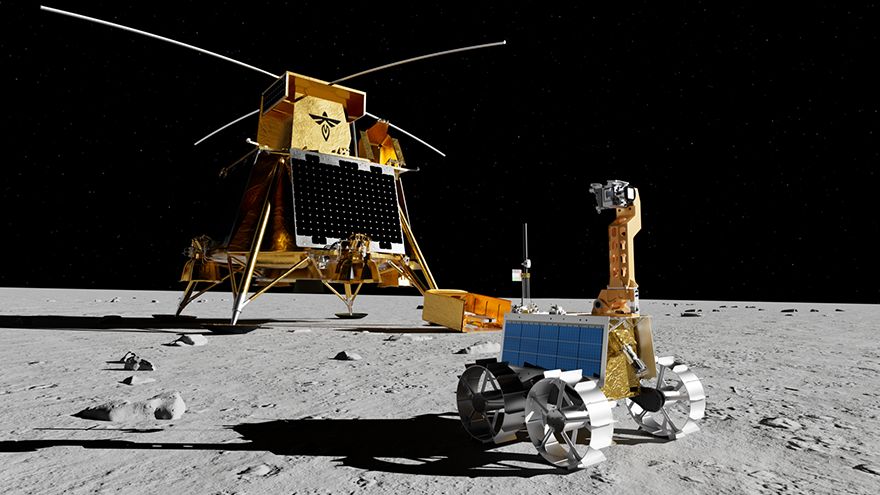 Deployed by Firefly’s Blue Ghost lander, the Rashid 2 Rover will demonstrate lunar surface mobility and in-situ resource utilisation technologiesFirefly Aerospace
Deployed by Firefly’s Blue Ghost lander, the Rashid 2 Rover will demonstrate lunar surface mobility and in-situ resource utilisation technologiesFirefly Aerospace, a leader in end-to-end responsive space services, has announced a new agreement with the United Arab Emirates’
Mohammed Bin Rashid Space Centre (MBRSC) to deliver the Emirates Lunar Mission’s Rashid 2 Rover to the far side of the Moon on Firefly’s Blue Ghost lander. The Rashid 2 Rover will join Firefly’s second lunar mission in 2026 in addition to payloads from Australia, the European Space Agency (ESA), and NASA as part of the Commercial Lunar Payload Services (CLPS) initiative.
Firefly Aerospace’s CEO Jason Kim said: “On the heels of Firefly’s flawless Moon landing and operations, our team is looking forward to collaborating with the UAE and further expanding our representation of Artemis Accords nations on this groundbreaking mission to the far side of the Moon. We are honoured to support the international space community with our versatile Blue Ghost lander and Elytra spacecraft that can stack together to provide unique access to both lunar orbit and the lunar surface.”
The Rashid 2 Rover will demonstrate lunar surface mobility on the far side of the Moon and utilise various materials on its wheels to evaluate their durability when exposed to lunar dust. The data collected will help guide the development of future lunar technologies, such as spacesuits, habitats, and other critical infrastructure. Utilising multiple cameras and probes, the rover will also study the Moon’s plasma, geology, and thermal conditions in support of future in-situ resource utilisation.
Strategic agreementH.E. Salem Humaid AlMarri, director general of MBRSC, said: “The strategic agreement signed with Firefly Aerospace marks a significant advancement in the UAE’s growing role in shaping the future of lunar exploration. Through the Emirates Lunar Mission’s Rashid 2 Rover, the UAE will become one of the few nations to explore the far side of the Moon. The mission will deliver valuable scientific data on the lunar surface, plasma environment, and dust behaviour — contributing to global knowledge and supporting future lunar infrastructure development. As we prepare for this historic milestone, we remain dedicated to expanding the UAE’s contributions to humanity’s long-term presence in space.”
During Blue Ghost Mission 2 operations, Firefly’s Elytra vehicle will first deploy the Blue Ghost lander and the European Space Agency’s Lunar Pathfinder satellite in lunar orbit. Blue Ghost will then touch down on the far side of the Moon to deliver the UAE’s Rashid 2 Rover, Australia’s Fleet Space SPIDER payload, and NASA’s LuSEE-Night radio telescope and User Terminal. Elytra will remain in lunar orbit to provide long-haul communications and enable radio frequency calibration services for LuSEE-Night.
The payloads flying on this international mission will advance the growing lunar ecosystem by searching for lunar resources, enhancing surface mobility on the Moon, improving lunar communications, and uncovering new insights about the origins of the universe.
Firefly has already begun qualifying and assembling flight hardware for Blue Ghost Mission 2, which will follow Firefly’s first lunar mission that completed the first fully successful commercial Moon landing on 2 March and completed 14 days of surface operations on 16 March, marking the longer commercial operations on the Moon to date.